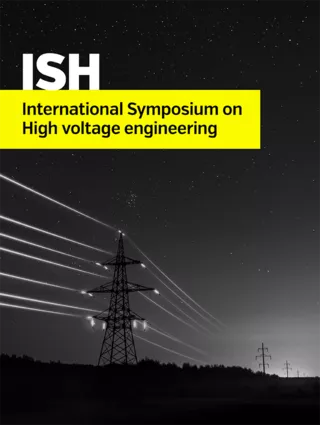Summary
A suitable alternative to SF6 as insulating and arc quenching gas in high voltage switchgear has to fulfil various requirements. Besides a high dielectric strength and arc cooling capability, it should also be resilient towards partial discharge activity (PD) which may occur in faulty equipment. In the present investigation the decomposition under partial discharge activity of C5-PFK and C4-PFN, both in mixture with CO2 was investigated experimentally. The gas mixtures were exposed to a high voltage DC corona discharge for several weeks, during which the net charge transported through the mixture was measured. This measurement technique is advantageous as it provides charge-based decomposition rates, which can directly be translated to PD activity in real high voltage equipment. Analytical methods were optimized to provide sensitive detection of the different by-products created during the experiment and to enable a quantitative assessment of the evolution of the composition of the gas during each experiment. Different columns for the gas-chromatography/mass-spectrometry analysis were evaluated. Within the columns investigated only the GasPro column can ensure a reliable analysis of the gas composition after partial discharge, given the prevailing fluorinated compounds. Mixtures of 4%, 14%, 30% C5-PFK and 4% C4-PFN with CO2 as well as pure CO2 were investigated. The wide range of C5-PFK concentrations does not only cover application-relevant concentrations (~4 %) of fluorinated compounds, but also higher concentrations to gain further insight on the behaviour of the mixtures under partial discharge. The analysis shows that pure CO2 mostly recombines after the partial discharge decomposition. This is in contrast to all other mixtures investigated where the decomposed CO2 is reacting with the decomposed fluorinated additives forming various by-products. The decomposition rates for C5-PFK and C4-PFN as well as the type and amount of by-products are comparable. Like for SF6-insulated equipment, toxic by-products are formed when the gas is exposed to partial discharge activity. The main toxic by-products identified from application-relevant mixtures were CO, CF2O, C2F4O, as well as CF3CN and C2N2 in C4-PFN mixtures. For all mixtures, extremely high and prolonged partial discharge activity is necessary to reach significant decomposition. Any high voltage equipment showing such levels of partial discharge activity rather face a dielectric integrity problem than a severe decomposition of the gas.
Additional informations
| Publication type | ISH Collection |
|---|---|
| Reference | ISH2017_534 |
| Publication year | |
| Publisher | ISH |
| File size | 492 KB |
| Pages number | 6 |
| Price for non member | Free |
| Price for member | Free |
Authors
C. DOIRON, A. DI-GANNI, S. SCHEEL
Keywords
SF6, C5 PFK, Alternative Insulation, Green, Partial Discharge, PD, Decomposition, Dissoziation




